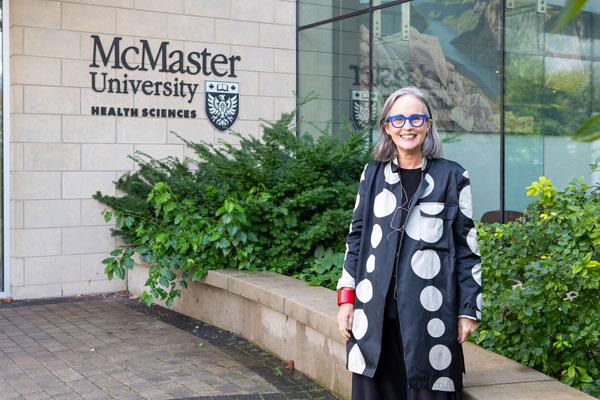Almost 60 years ago a “green dean and a budding architect” formed a partnership to establish the McMaster Health Sciences Centre at McMaster University in Hamilton, Ont.
Now those two men, who were only in their 30s at the time, are being honoured through the creation of a yearly lecture series.
Sponsored by the family of John Evans, the first dean of the university’s Michael G. DeGroote School of Medicine, to honour Eberhard Zeidler, the architect of the health centre, The Architecture of Health: The Annual Zeidler-Evans Lecture series is intended to examine the relationship between architecture and health care.
The inaugural lecture was delivered at the University earlier this month by McGill University Prof. Annmarie Adams, who was also the keynote speaker at an informal preview earlier that day at the MaRS facility in Toronto.
Details of the lecture series and how and why it was created were delivered by Tim Evans, one of John Evans’ six children. Other members of the Evans family as well as those of the Zeidler family attended the event.
“From its inception, the new medical school at McMaster realized that pioneering approaches to education and community-centred care included groundbreaking innovation in the design and use of physical space,” said Evans.
The new school required “a space that not only facilitated its out-of-the-box approach to training doctors but more fundamentally embodied its defining value of making sure that people are at the centre of health care.”
Referring to his father as the school’s “green dean” and Zeidler as its “budding architect,” Evans pointed out that both went on to illustrious careers. John Evans later became president of the University of Toronto which created the MaRS innovation hub and Zeidler created some of Canada’s most iconic buildings including Ontario Place and the Toronto Eaton Centre.
Upon the passing of Zeidler in January of this year, the Evans family began reflecting on the lifelong friendship between their father and the architect, said Evans, in explaining the reasons of why he and his siblings created the lecture series.
In introducing Adams, he cited her many accomplishments including holding degrees in architectural history and architecture and “bridging the worlds of architecture and health” at McGill University, as well as being an author.

Adams told the invited audience that her Three Hospitals. Two Visionaries. One Credo. lecture, would explore “the architectural innovation and dynamic links in three Canadian hospitals, in three cities, from three decades” and their connections to iconic buildings beyond health care.
They include the McMaster University Medical Centre in Hamilton, which was built in 1972, the Walter C. Mackenzie Health Sciences Centre in Edmonton, built in 1986, and SickKids Hospital in Toronto, where an eight-storey atrium designed by Zeidler was added in 1993.
“The influence of all three hospitals is greater than ever,” said Adams, who was one of the authors of a research paper designed to determine how children’s observations, perceptions, and uses of the SickKids atrium corresponded to the architects’ and planners’ intentions.
Some of the participants in the control study were provided with cameras to document their assessments of the atrium.
Adams told the audience there would be number of “takeaways” from her formal presentation at McMaster, especially the need for close collaboration between the architectural and health care professions.
To emphasize that point she referenced a quote Zeilder made in an unpublished interview: “The client must understand that to make a beautiful building is the concept at the end, not at the beginning.”
In an interview after the presentation, Adams was asked what recommendations she would like to pass on to architects regarding the design of hospitals and other health care facilities.
“Architects should critically assess already-built hospitals. It’s not necessarily always a case of reinventing the wheel.”
On another point, the professor said she welcomes the trend where general architects are being awarded commissions to design health care facilities as opposed to strictly restricting commissions to architects who specialize in health care design.
“It (the diversification) brings in fresh ideas.”











Recent Comments
comments for this post are closed